Samsung Galaxy Z Fold 6 Review
A new look is welcome, but Samsung should've had other priorities for the Z Fold 6.














Verdict
The Samsung Galaxy Z Fold 6 offers a decent upgrade with a cleaner design, top-end processing power, Galaxy AI smarts and the longest software promise around, but it’s beginning to fall behind the competition in key areas like camera, charging and foldable screen tech.
Pros
- Tweaked design helps it stand out
- One of the most powerful foldables around
- Seven OS upgrades see you through to Android 21
Cons
- Battery doesn’t always last a single day
- Cameras are starting to look a little dated
- Foldable screen crease is still very noticeable
Key Features
- Slightly different aspect ratioThe outer screen is now wider, with a comfortable 22.1:9 aspect ratio, and it features flat edges and sharper corners to help it stand out.
- Galaxy AISamsung’s Galaxy AI software features include Magic Doodle, AI Portrait Studio and more.
- Snapdragon 8 Gen 3 for Galaxy powerThe custom Snapdragon 8 Gen 3 chip and improved vapour chamber cooling means the Z Fold 6 can handle just about anything you can throw at it.
Introduction
As we enter the sixth generation of book-style foldable with the Samsung Galaxy Z Fold 6, we should expect a foldable closer to perfection than much of the competition that are only a couple of generations into their foldable journeys.
Sporting a much sharper, cleaner design than its predecessor, a slimmer and lighter build along with Snapdragon 8 Gen 3 for Galaxy power and all the fun of Galaxy AI, the Samsung Galaxy Z Fold 6 is indeed a good-looking, performant foldable with the longest software promise you’ll find on a book-style foldable right now.
However, Samsung has continued to neglect areas of the Z Fold experience that are in desperate need of TLC, including the low-res auxiliary camera lenses, relatively slow charging and middling battery life.
Not to mention the internal crease, which remains just as present as ever.
The question is, with increased competition in the foldable space, is this still the flagship foldable to get? Or are you better off sticking with the Z Fold 5, or plumping for one of its excellent rivals, the OnePlus Open? We’ve compared the Z Fold 6 with the OnePlus Open and the Z Fold 5 separately if you’re curious.
In the UK, the Galaxy Z Fold 6 starts at £1799 for the 256GB model, rising to £1899 for 512GB and £2099 for 1TB. In the US, prices start from $1899.
Design
- New squared-off, flat design
- Slightly altered aspect ratio
- IP48 resistance isn’t as exciting as expected
With the Z Flip 6, Samsung decided against making wholesale changes to the design, but that isn’t so much the case with the Z Fold 6.
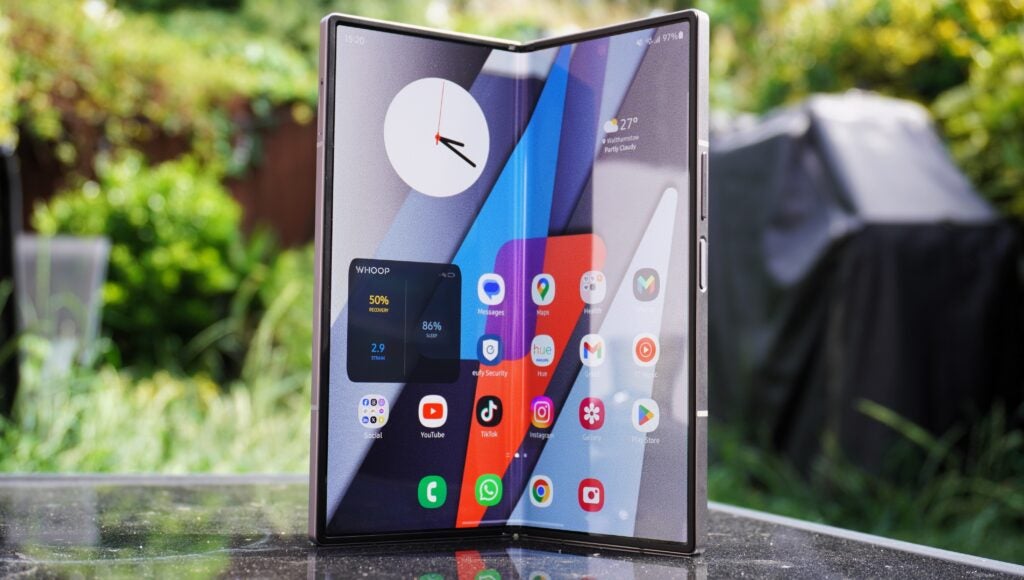
The sixth iteration of Samsung’s original foldable is noticeably lighter (239g v 253g) and thinner when folded (13.4mm vs 12.1mm) than the outgoing model, making it much more comfortable to use and bringing it closer in line with the likes of the 239g, 11.7mm OnePlus Open.
But it’s more than simply making it a bit thinner and lighter; it sports a refreshed design that makes a huge difference to the overall look. The company has taken a bit of inspiration from the Galaxy S24 Ultra by squaring off the corners of the phone, while also flattening the sides and adding a matte finish that does well at hiding smudges.
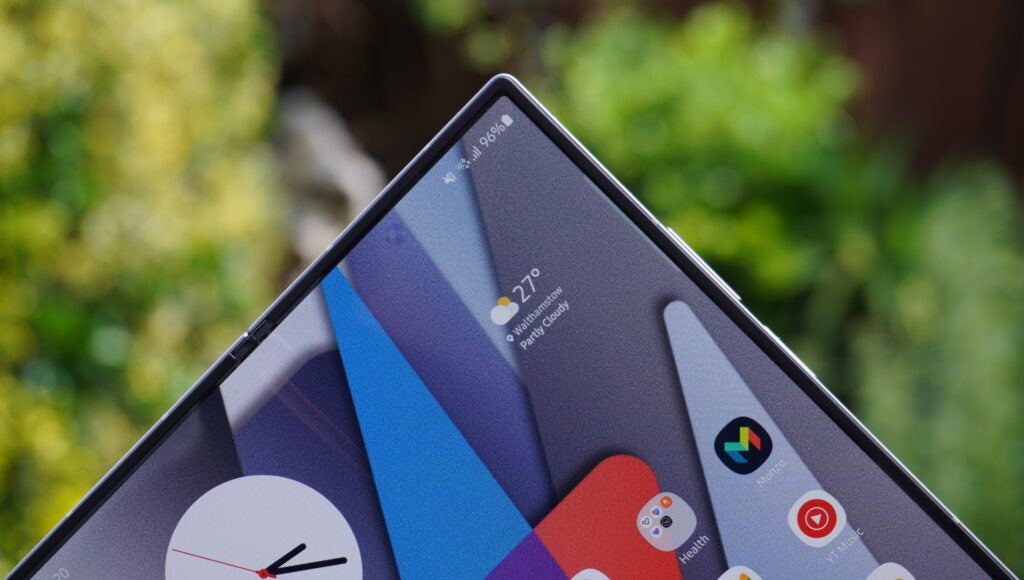
It makes everything look a little bit sharper and cleaner, especially the external and internal displays, and it doesn’t feel uncomfortable in the hand either. Honestly, the rounded edges of most of the foldable competition almost look a little bit dated in comparison.
Flip the foldable over and you’ll find a slightly redesigned camera housing with a new textured bezel surrounding each camera lens, complete with a frosted glass rear protected by Corning’s latest Gorilla Glass Victus 2, and it’s available in attractive colours like navy, pink and silver. This all equates to a very nice-looking foldable with clean lines that stands out from much of the book-style competition, even at a glance.
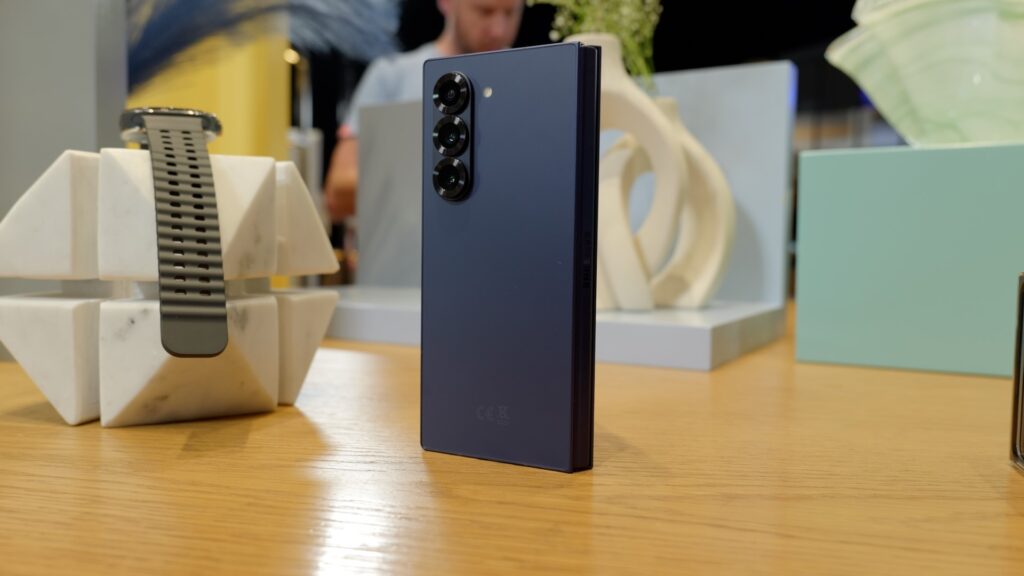
The outer screen is 0.1-inch bigger and has a slightly different aspect ratio too, down to 22.1:9 from 23.1:9, making it marginally wider. It’s not Google Pixel Fold wide, but it’s not quite as narrow as before, though I can’t say that I’ve noticed a huge difference in actual day-to-day use. It’s still a very tall, slim screen, though that does at least make it easy to use one-handed – as long as you don’t need to reach the top of the screen, anyway.
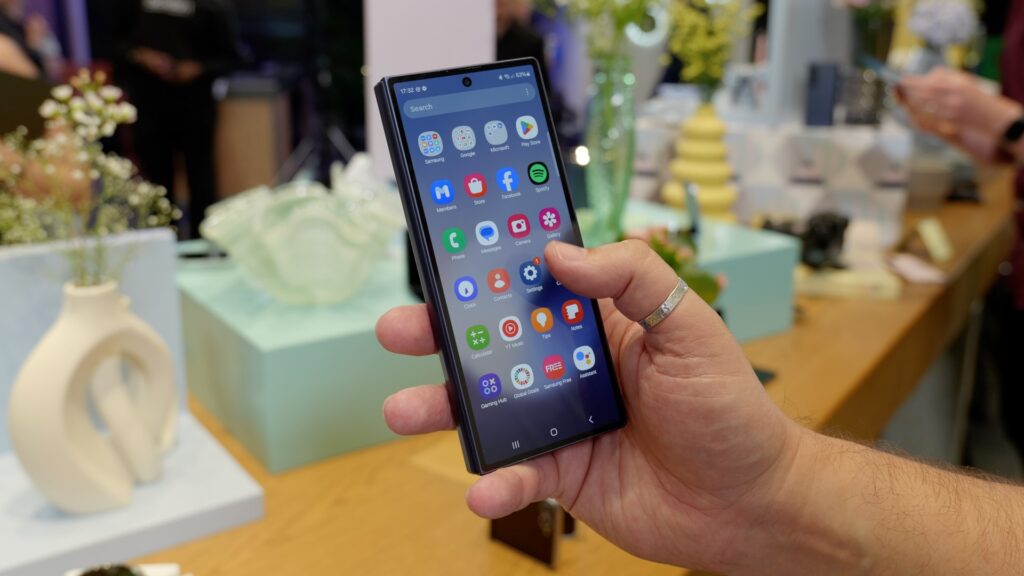
There’s also upgraded IP48 resistance which means the foldable is protected from both full submersion in water and ingress from objects larger than 1mm – though dust is much smaller than that, so it’s not as exciting an upgrade as it might first seem.
In fact, the small print on the Samsung website explicitly says that the Z Fold 6 isn’t dust- or sand-resistant, so best to keep it away from sandy beaches.
Screens
- Slightly bigger, brighter external screen
- 7.6-inch internal screen is fun and useful
- The foldable crease still remains noticeable
The Z Fold 6’s outer 6.3-inch OLED display, which Samsung calls the Cover Screen, remains HD+ in resolution with a 120Hz refresh rate and a boosted 2600nits peak brightness that makes it easier to see, even in direct sunlight.
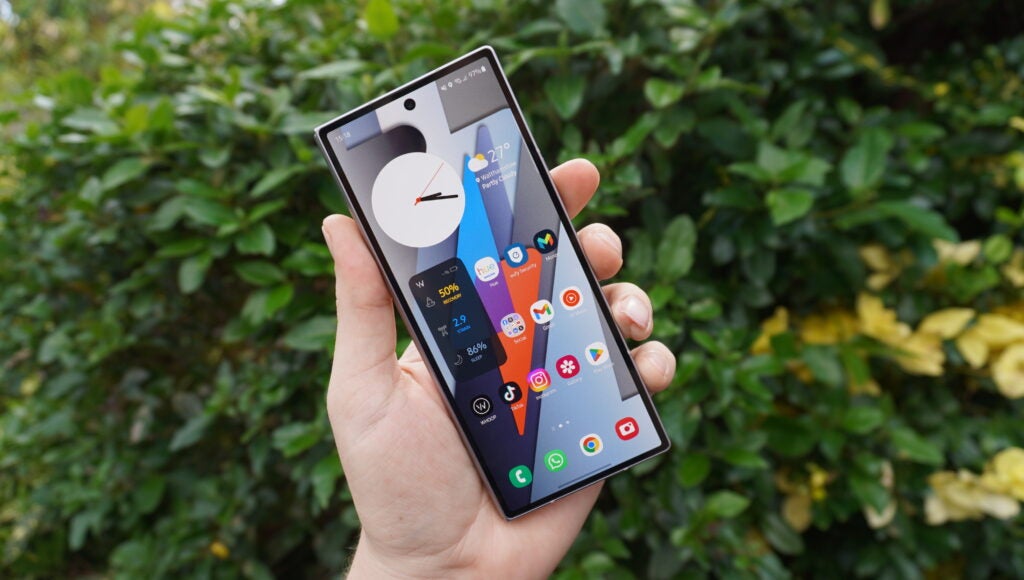
Its size has increased slightly from its 6.2-inch predecessor, but I can’t say that it’s all that noticeable in everyday use. It remains a decent panel for answering calls, replying to messages and checking your Instagram feed quickly, but the tall-and-narrow aspect ratio means that content can look a little squished.
I still prefer the squatter look of the Pixel Fold and OnePlus Open as they have outer displays akin to traditional phones, so you can even play games without much issue, although Samsung’s slight changes here are a move in the right direction.

Most of the fun happens on the larger 7.6-inch interior panel. This 120Hz LTPO-enabled OLED screen can now hit 2600 nits of brightness, and one issue I’ll delve into shortly aside, it’s a really nice screen. Is great for gaming, watching YouTube or just scrolling through Instagram, even more so in 2024 with most apps and games now supporting the Fold’s boxy 20.9:18 aspect ratio.
It has also replaced my Kindle as my go-to e-reader for commuting, meaning one fewer device I have to carry around in my bag. It’s just so handy having such a large canvas easily accessible in my pocket.
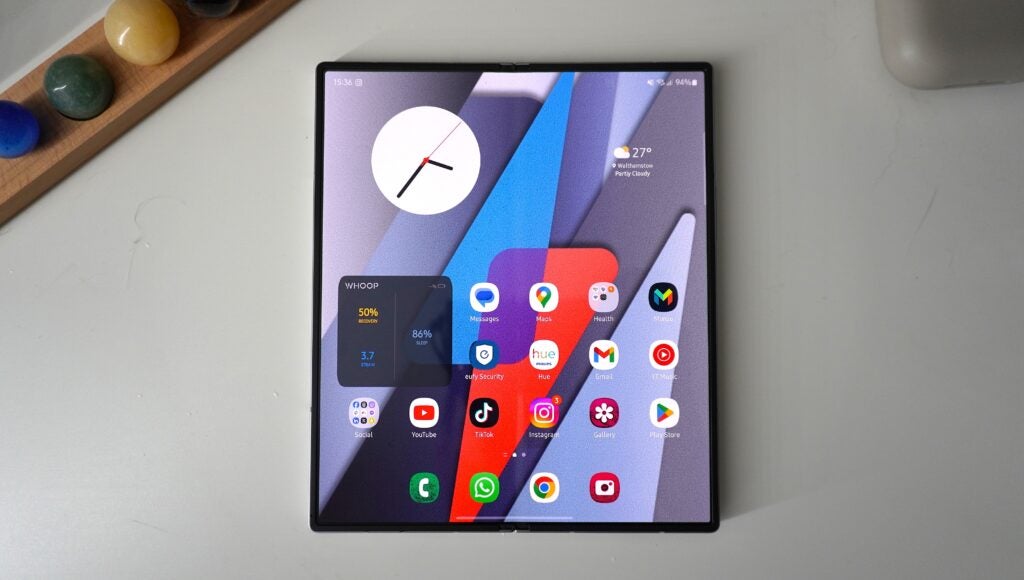
There is a caveat, and it’s the same caveat that has been present on every iteration of the Z Fold series to date – the crease. The divet that runs down the middle of the screen is still present and still an eyesore.
When most of the foldable competition, including 2023’s Honor Magic V2 and OnePlus Open, have made serious waves in reducing both the look and depth of the internal crease, Samsung feels stuck in the past by still having a pretty noticeable dip on its inner panel.
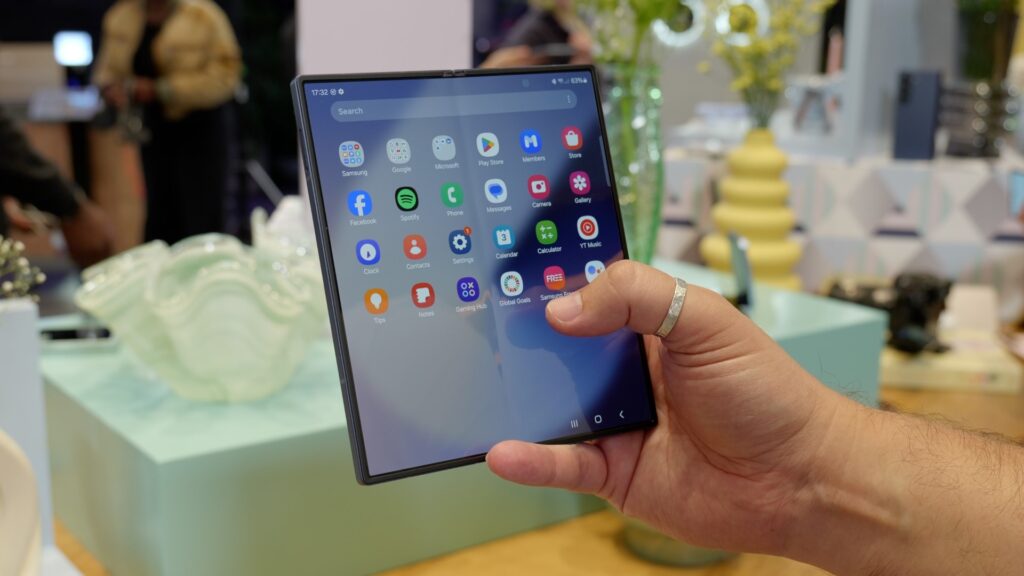
You might get used to the sensation of running your finger across the crease after a while – and those that have used Fold devices before will feel at home – but for a device that costs £1799/$1899, it’s something I would rather do without.
Cameras
- Same main and telephoto cameras as Z Fold 5
- Slightly tweaked 12MP ultrawide
- Pretty good, but not the best, camera performance
Considering Samsung makes one of the best camera phones around in the form of the top-end Galaxy S24 Ultra, you might expect a similar level of quality on its top-end foldable – but sadly, it’s not quite the case.
You see, the cameras dotted around the Fold 6 are very much the same as those on the outgoing model. On the back, there’s a 50MP wide (OIS, f/1.8), a 12MP ultrawide and 10MP telephoto with 3x optical zoom. Inside there’s a 4MP under-display camera, while a 10MP selfie camera can be found on the Cover Screen.
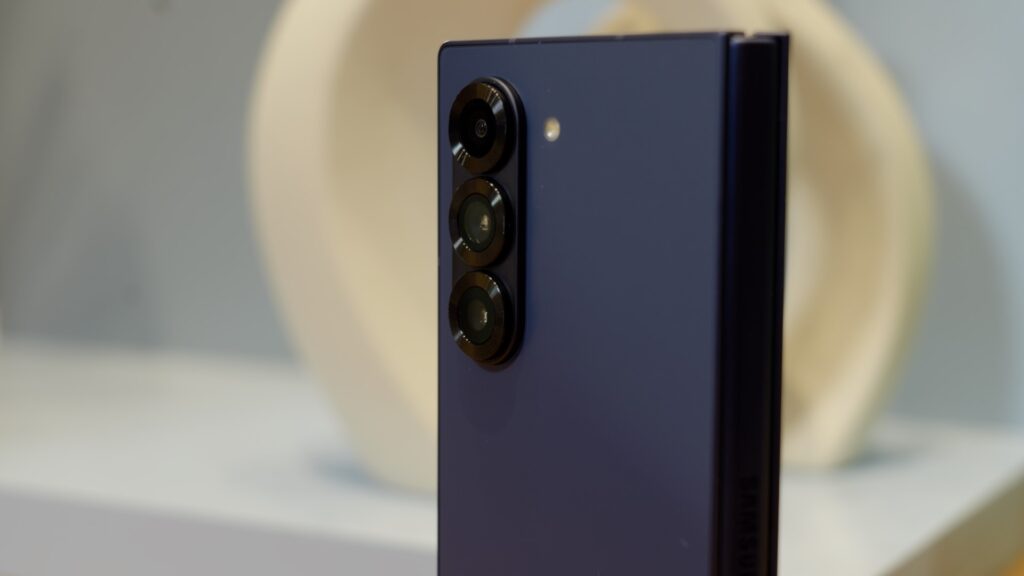
The ultrawide is a different sensor according to Samsung, with better HDR performance and low-light capabilities, but it still trails behind much of the foldable competition.
The OnePlus Open, for example, has a combination of a 48MP, f/1.7 main lens with a big 1.43-inch sensor, a 64MP periscope lens and a 48MP 114-degree ultrawide, while the Honor Magic V2 offers a 50MP f/1.9 main, 20MP 2.5x telephoto and 50MP ultrawide, and these phones are nearly a year old.
So, camera performance is pretty much in line with what you got from the Samsung Galaxy Z Fold 5, which is to say that it’s still a capable foldable camera setup, but not quite the best you’ll find around in 2024.
The main 50MP camera remains the star of the show with OIS and f/1.8 aperture allowing for crisp shots with balanced lighting across the highlights and shadows. Colours remain overly vibrant as with most Samsung phones, but they do at least look great on the AMOLED screens of the foldable.





The wide aperture and OIS also lend themselves well to low-light performance. It’s not what you’ll find from the S24 Ultra by any means, but it can capture a well-balanced low-light shot without unnaturally brightening the environment, though it does suffer pretty badly from lens flares from any particularly bright light sources. It’s also best suited to still subjects, as movement can incur a slight blur.




The upgraded 12MP, f/2.4 123-degree ultrawide lens, despite its new sensor, doesn’t deliver a huge boost to overall image quality. It does, as Samsung claimed, handle dynamic range much better and there is a slight boost to low-light shots, but the latter does still come out a little soft and dark compared to the main sensor.







The 10MP 3x telephoto lens is the one that I wish Samsung would’ve focussed on a little more this year. It remains the same as the Z Fold 4, let alone 5, while the competition has made massive strides in the zoom lens department. The OnePlus Open has a 64MP 3x periscope lens with a larger sensor that can deliver 6x in-sensor zoom and much better digital zoom shots than the Z Fold 6 is capable of.







It can still deliver nicely detailed shots, particularly in bright environments, that allow you to get closer to the subject without moving, and the 10x digital zoom is surprisingly good considering the megapixel count, but I’d say that’s about the limit for usable images. I just wanted something more from such an expensive foldable.


In terms of selfie performance, the 10MP cover snapper is the one to opt for with pretty good results for a quick snap. The under-screen nature of the inner 4MP camera means photos can look comparatively soft and oddly coloured, though it’s likely only designed to be used for video calls and not much else.
But, with the ability to use a combination of the higher-quality rear cameras and the front screen as a viewfinder, you’ll likely not use the dedicated selfie lenses all too often.
Performance
- Custom Snapdragon 8 Gen 3 chipset
- Improved cooling for better game performance
- One of the most powerful foldables around
The Z Fold 6 is Samsung’s foldable flagship, and the specs showcase the high-end nature of the device. It is powered by the same Snapdragon 8 Gen 3 for Galaxy as the Galaxy S24 Ultra we reviewed earlier in 2024, paired with 12GB LPDDR5 RAM and up to 1TB of storage. There’s also support for Wi-Fi 6E, 5G, Bluetooth 5.3 dual SIM with a nano-SIM and eSIM.
Combined with a larger vapour cooling chamber compared to the Z Fold 5, it’s safe to say that the Z Fold 6 is pretty well equipped for gaming.
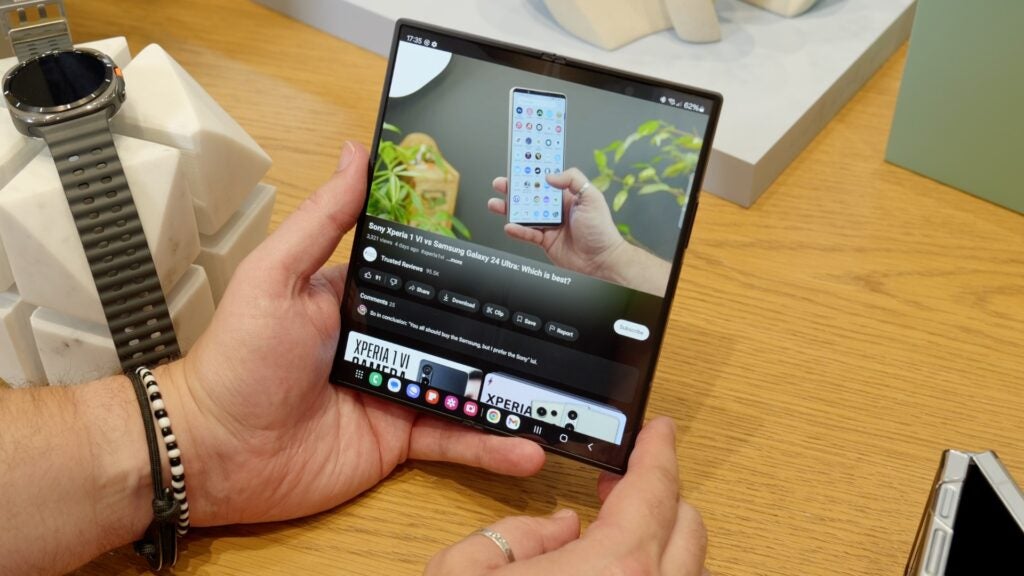
Not only can I run games like Genshin Impact with high-end graphical settings on the 7.6-inch internal display, but it manages to stay relatively cool while doing so. It does warm to the touch after 30 minutes of gameplay, and there is a bit of throttling as a result, but it doesn’t get anywhere near as hot as some phones I’ve used this year.
It’s just as rapid in general use, with fast, smooth animations, stutter-free scrolling and the ability to run multiple apps at once without breaking a sweat. And, with Snapdragon’s GenAI support, the phone’s AI features are relatively quick too – but more on that in a bit.
This is borne out in benchmark testing too, with the Z Fold 6 confidently topping most of the flagship competition – though it seems that our graphics benchmark was set at 60Hz, and with no way to force a 120Hz refresh rate on the Z Fold 6’s display, there’s not much we can do – but safe to say it can reach well over 60fps in most supported games.
Software and AI
- OneUI 6.1.1 based on Android 14
- New Galaxy AI features
- Impressive software support
Galaxy AI was the big software focus with the S24 series, and a lot of those smarts are again big additions for the Z Fold 6.
The auto-formatting and AI summary features make a lot of sense on the larger interior display, especially as the Fold 6 still supports the S Pen for doodling and note-taking – though unlike the S24 Ultra, it’s very much an optional accessory.
Then, there’s also new GenAI tech exclusive to this year’s foldable (until it hits the S24 range via OTA update, anyway) in the form of Magic Doodle and AI Portrait Studio. The former is arguably the more interesting of the two, allowing you to do basic doodles of things like sunglasses on a photo of your dog, then using GenAI, create something more realistic, while the latter essentially generates images of your portrait in different styles.

The phone also sports all the other key features of Galaxy AI introduced on the Galaxy S24 series earlier this year, like the ability to remove subjects from photos, transcribing and summarising voice recordings and on-device translation capabilities too.
In fact, the latter is better than what you’d find on the S24 as it can utilise both the inner and outer displays, showing your translation on one side and the recipients on the other. I spent a lot of time delving into these Galaxy AI features in my Galaxy S24 Ultra review, so take a read if you’re curious about how Galaxy AI performs day-to-day.
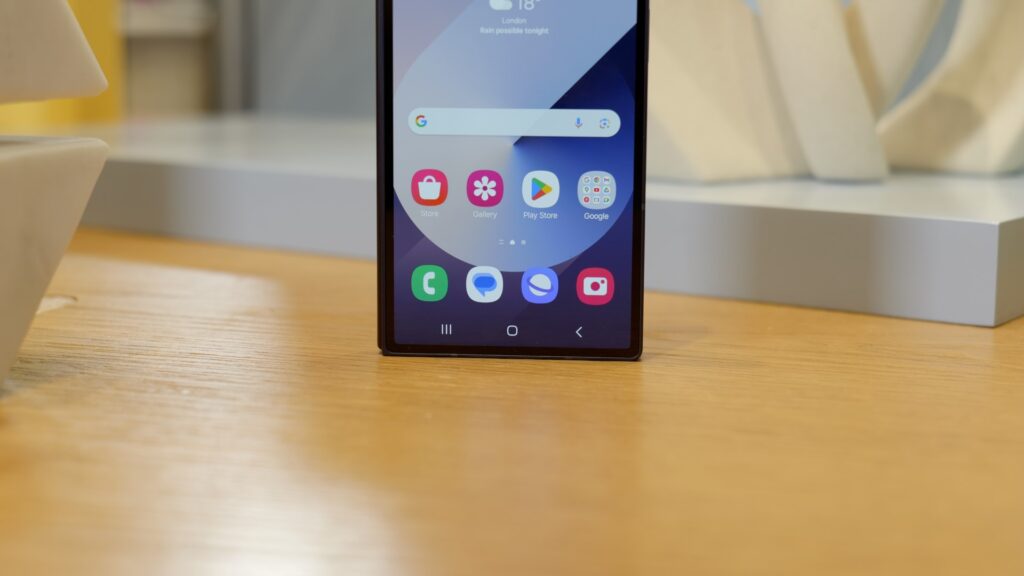
AI smarts aside, features like Google’s exceptionally useful Circle to Search are also present, which lets you draw around anything on the screen to find out more, and works very well on the larger screen. What’s more, you can now circle QR codes and get answers to complicated maths equations.
Elsewhere, it’s very much business as usual with OneUI 6.1.1 based on Android 14, sporting the same slew of Samsung-branded apps as the rest of the Galaxy collection, along with handy features like Samsung DeX. It’s a more stylised experience than stock Android, but one that existing Samsung users will be very at home with.
One of the biggest reasons to opt for the Z Fold 6 is its excellent software support, offering an impressive seven OS upgrades that’ll take the foldable through to Android 21. That’s among the longest in the market, along with select other Samsung devices and Google’s latest Pixel range, besting practically every other foldable on the market by at least a few years.
Battery Life
- Same 4400mAh battery as the Z Fold 5
- Doesn’t always get through a day on a charge
- Relatively slow 25W charging
If there’s one area where the Z Fold 6 needs to do better, it’s battery life. Now it’s usual for a newly set-up phone to take a day or two to organise everything in the background, and that usually means a hit to battery life, but it sorts itself out rather quickly.
The problem that I’ve found with the Z Fold 6 is that battery life never really got any better after those first few days. Despite having a full charge in the morning, I’ve found that even with what I’d describe as average use, the 4400mAh cell of the phone would dwindle by the early evening.
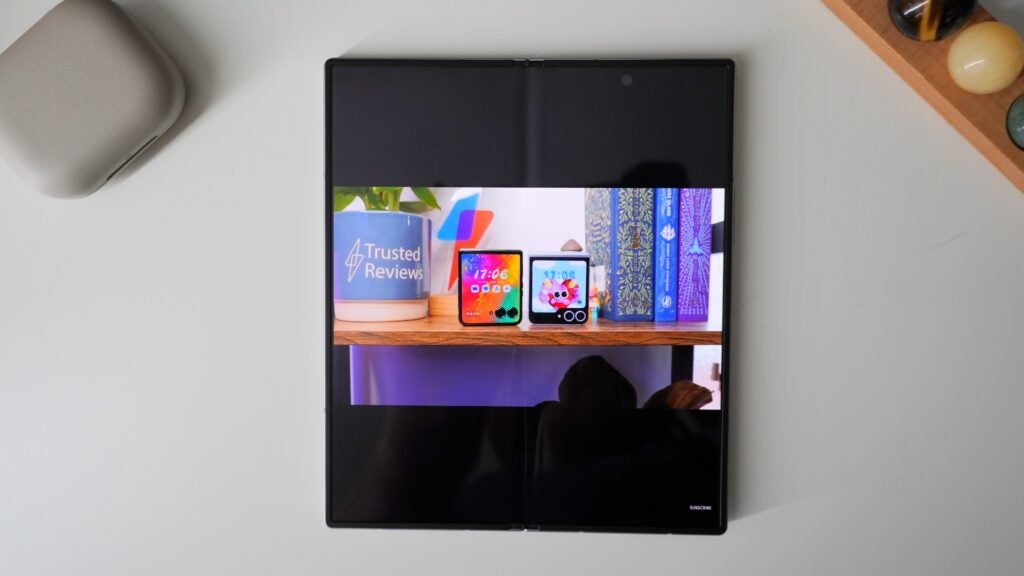
One day, I found that the battery had dropped to 38% by 4pm after only 2 hours and 42 minutes of screen-on time, the majority of which was on the smaller external panel. This meant that I’d basically always carry a power bank with me, not because I’d need it for sure, but because it was a strong possibility – and I’ve not had to do that with a phone for a while.
Considering most year-old rivals, including the OnePlus Open and Honor Magic V2, have larger cells at 4805mAh and 5000mAh respectively that can handle an average day’s use, it would’ve been nice to see Samsung boost the capacity a little bit with this year’s foldable.
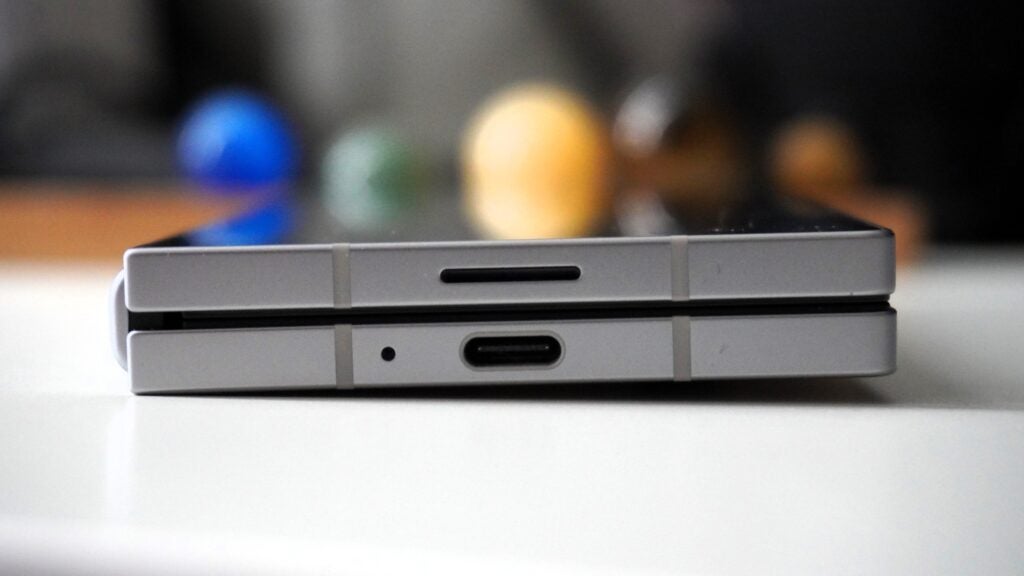
That wouldn’t be bad if the Z Fold 6 was fast at recharging, but with 25W maximum charge speeds, you’re looking at around 90 minutes for a full charge, gaining 46% in 30 minutes via USB-C PD. Again, compared to the aforementioned foldables, this is a lot slower, and an area where Samsung should’ve really improved with the Z Fold 6.
You do at least have the option of charging wirelessly with 15W wireless support, and there’s 4.5W reverse wireless charging for charging accessories like earbuds in a pinch, adding extra convenience to the charging experience.
Latest deals
Should you buy it?
You want a good-looking foldable with lots of power
The updated design helps the Z Fold 6 stand out from the crowd, and the custom Snapdragon 8 Gen 3 is the most powerful on the market right now.
You want the best foldable camera experience
While the Z Fold 6’s camera setup is still capable, it’s not quite as advanced as what you’ll find from the likes of the OnePlus Open and Honor Magic V2.
Final Thoughts
The Samsung Galaxy Z Fold 6 remains a tempting book-style foldable, with a refreshed design with sharp corners and flat edges that help it stand out from the crowd, and a thinner and lighter build brings it in line with the foldable competition too.
It’s also a segment leader in terms of performance from the Snapdragon 8 Gen 3 for Galaxy, and with a whopping seven years of OS upgrades guaranteed, the Z Fold 6 will see you through to Android 21. You can’t say that about any other book-style foldable available right now.
So yes, there’s a lot to love about this year’s foldable, but equally, Samsung is beginning to lag behind the increased foldable competition in key areas.
The internal screen’s crease remains just as present as ever, making it one of the more notable creases around, and the largely untouched camera system, while still pretty capable, is starting to look a little dated compared to more capable, higher-res alternatives.
And, with middling battery life that didn’t always see me through to the end of the day on a single charge, I started carrying around a power bank. I’ve not had to do that for some time for a foldable.
How we test
We test every mobile phone we review thoroughly. We use industry-standard tests to compare features properly and we use the phone as our main device over the review period. We’ll always tell you what we find and we never, ever, accept money to review a product.
Used as a main phone for a week
Used as a main phone for over a week
Tested and benchmarked using respected industry tests and real-world data
FAQs
Samsung has committed to seven years of OS upgrades with the Z Fold 6.
It’s IP48 rated for dust and water resistance, but it’s not completely waterproof.
No, there isn’t a charging brick in the box, only a USB-C cable.








